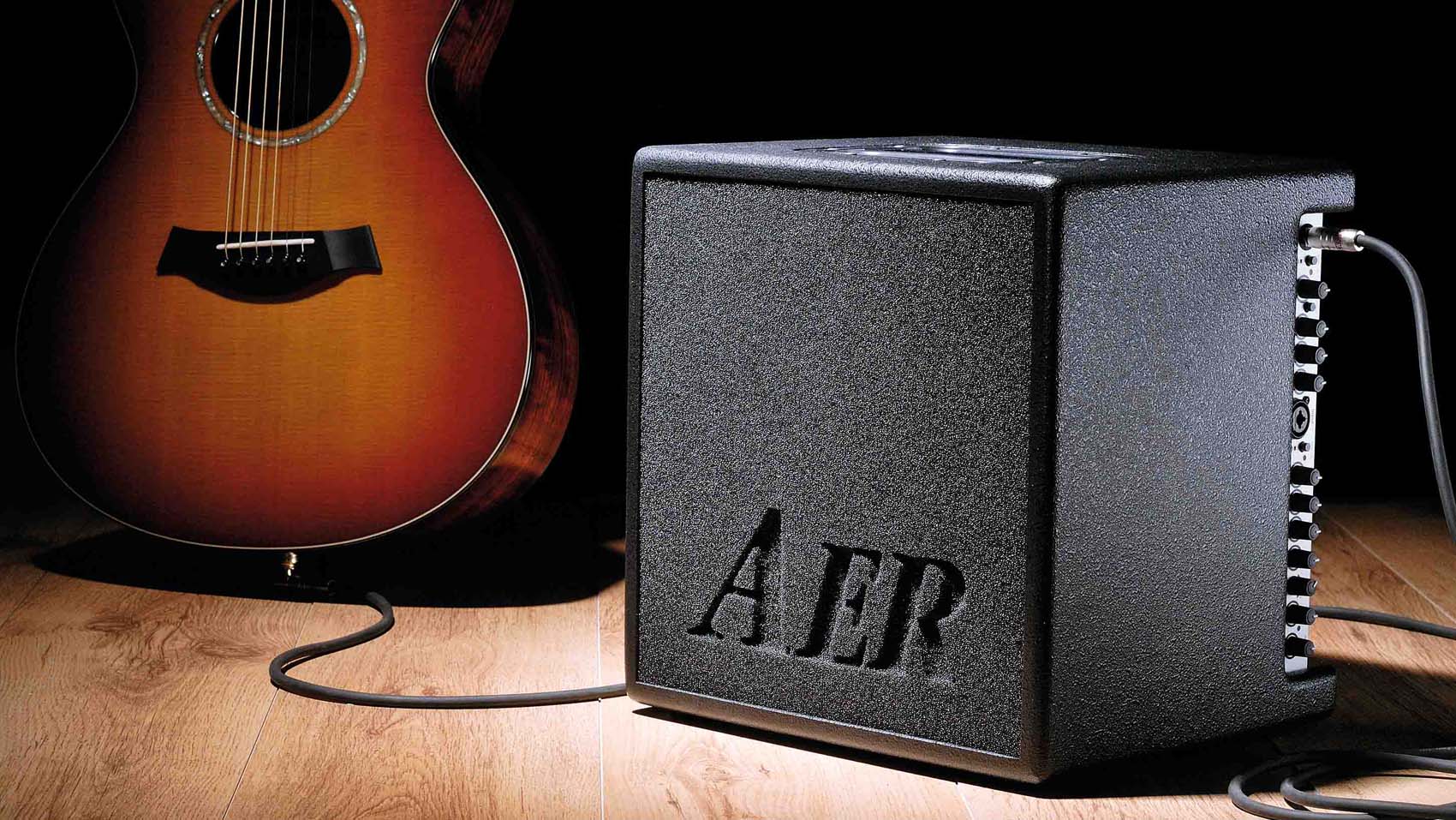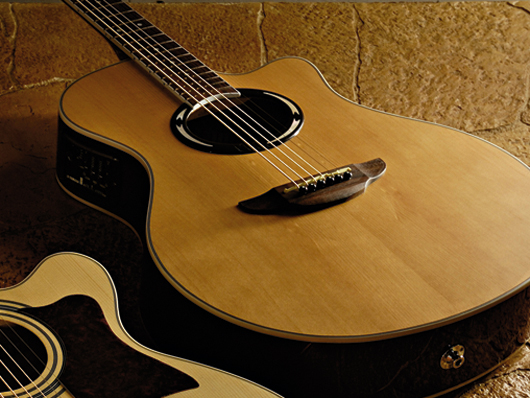
Many well-organised nights will have decent PAs and helpful sound engineers that want your acoustic to sound as good as it can. Many other, less well organised nights, however… not so much.
In our opinion, if you're at least half-serious about your acoustic electric guitar performances, you need to take some kind of responsibility for your plugged-in sound. The main benefit to you is reduced stress thanks to fewer surprises, a more consistent sound and the potential for better monitoring.
More often than not, that means a better performance, which is of course the main benefit for your audience. Here's an overview of plugging-in options.

For more live electro-acoustic advice, check out our 10 tips for better live electro-acoustic guitar sound.
1. Plug direct to the PA
When you start out playing live, this is what you'll be doing. Your guitar's pickup and preamp get sent either direct to a mixing desk, or via some kind of functional DI box in between the guitar and the desk.
Most modern electro-acoustics have preamps that are powerful enough to plug straight into anything, but some older, passive (no battery) systems, contact pickups and the like need a bit of preamp/level help along the way. Modern mixing desks tend to be able to handle pretty much any input.
Upsides: No gear to carry around; the cheapest option
Downsides: Inconsistent sound from gig to gig; potential for poor monitoring; your guitar's preamp might not sound great
Get the MusicRadar Newsletter
Want all the hottest music and gear news, reviews, deals, features and more, direct to your inbox? Sign up here.
2. Preamp / DI pedal
Acoustic DI/preamp boxes packed full of features and tone-shaping potential are pretty common these days. Rarely bigger than a large effects pedal, they can range from very simple to very complex.
Preamp pedals can help a very average-sounding electro system sound much more refined and powerful
Essential functions are some kind of input gain control and a basic EQ section, after which you can take your pick of more involved, parametric-style EQs, feedback-busters, phase reversal and even effects including delay, reverb and compression. The most obvious benefit is that they can help a very average-sounding electro system sound much more refined and powerful.
They're a good choice if you have a PA and monitoring set-up that you know and use regularly - such as your band's own PA - and likewise they're a great addition to a simple, powered PA speaker to turn it into a decent acoustic amp. They're less use if you're unsure of the PA and monitoring situation, which is to say they're great with a great PA and not so great with a bad one.
Upsides: Compact, easy to carry; potentially very powerful sound sculpting potential; improvement over many internal preamps
Downsides: You're still reliant on the house PA and monitors
3. Acoustic guitar amplifier
Right up there with PA gear, lighting and mic stands, a dedicated acoustic guitar amplifier is a reluctant purchase for many musicians: sexy it ain't. It might also be essential, however, because if you don't carry your own PA, it's your only guarantee that you'll be able to hear yourself with an electro-acoustic.
Better still, if you buy the right one, you might not even need a PA for certain performances, because that's essentially what they are: a small PA in a box, with an input/EQ section optimised for your electro-acoustic guitar pickup. It's very, very different from a regular, electric guitar amp.
Most modern acoustic guitar amps have two channels; one for your guitar as mentioned - for either magnetic or transducer pickups - and the other with an additional microphone input that can be used for guitar, vocals, or anything else you might want to mic up.

Check out our guide to the best acoustic amps for buskers and gigging guitarists for some suggestions.
Many also have in-built reverb, sometimes delay and chorus too and of course the all-important DI output so you can run it straight to the PA. They vary greatly in size, sound and cost but are usually a lot smaller than a regular electric guitar combo.
Upsides: You can always hear yourself; consistent sound quality; well-suited for band environments
Downsides: More gear to carry; the good ones tend to be pricey; not everyone loves the sound
4. Small PA / full-range powered speaker
There's a fine line between some powered PA cabinets and the bespoke acoustic guitar amplifier - given that both will feature full-range amp and speaker sections. Also, with the introduction of products such as the Bose L1 range, Fender's Expo and JBL Eon One, you might find that a compact PA solution such as those mentioned is more fit for your purpose. Perhaps not as a dedicated acoustic amp by itself, but if you need to sing, add other instruments and perform in smaller spaces, they're a great option.
Some have little/nothing in the way of on-board EQ control, in which case you'll need to either rely on what's in your guitar's built-in electro system, or get a separate mixer or a dedicated acoustic preamp as mentioned above. Others have basic gain and EQ control on board.
Upsides: Extremely flexible to take multiple performers and voices; plenty of power
Downsides: Lots to carry around; good ones are very expensive; requires extra gear to optimise for electro-acoustic
Compromise: You Have To
We've summarised the main approaches to getting your electro-acoustic heard in a live environment, and nobody is going to suggest that it's an easy task. The chief problem is this: the air movement and sonic presentation that comes from an acoustic guitar are impossible - yes, impossible - to replicate accurately through an on-board pickup system, amp, preamp, PA or anything else.
If you stop expecting 'the perfect acoustic sound but louder', you can move on to being creative with the sound that you do have
We'll balance that by saying that mic'ing a guitar is no better solution for the vast majority of live gigs, especially if there's any kind of band involved. Furthermore, some of the attack, frequency response and feedback-busting abilities that come with on-board pickups - however 'unnatural' the purists claim them to be - can actually be beneficial at high volume.
Any way up, just accept it: your guitar plugged-in will never sound exactly like your guitar played acoustically.
Depressed? Don't be. Our advice is to simply shift perspective. If you stop expecting 'the perfect acoustic sound but louder', you can move on to being creative with the sound that you do have. Go forth and electro-fy!
Don't Miss
10 tips for better live electro-acoustic guitar sound
9 of the best acoustic amps for buskers and gigging guitarists
Guitarist is the longest established UK guitar magazine, offering gear reviews, artist interviews, techniques lessons and loads more, in print, on tablet and on smartphones Digital: http://bit.ly/GuitaristiOS If you love guitars, you'll love Guitarist. Find us in print, on Newsstand for iPad, iPhone and other digital readers
“I’m beyond excited to introduce the next evolution of the MT15”: PRS announces refresh of tube amp lineup with the all-new Archon Classic and a high-gain power-up for the Mark Tremonti lunchbox head
“Its mission is simple: unleash the power of any amplifier or line-level source without compromise”: Two Notes promises a “watershed” in tube amp control with the Torpedo Reload II










